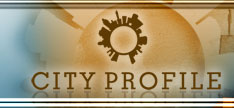In August 1776, almost a century before the conception of the Prospect Park, the location was the setting of the Battle of Brooklyn fought by the Continental Army under George Washington during the Revolutionary War. Today a plaque that commemorates this event is displayed in one area of the 585-acre grand Prospect Park that is considered an oasis in the middle of bustling Brooklyn.
In 1814, Robert Fulton operated a steam ferry in Brooklyn and soon changed the city from its quiet farming way of life. The city became the world?s first commuter district and in the last 60 years, became United States? third largest city. This development opened the city?s doors to immigrants, mostly European. Ferry lines quadrupled and street fences were built to safeguard properties, destroying more and more of the rural landscape. The city?s population grew successively and extensive farms were converted to row homes.
At the same time, in some part of the country, especially in larger states, the impending role of public parks was gaining popularity. The creation of Central Park in Manhattan became an inspiration for the citizens of Brooklyn to cry for the establishment of its own park, along with the rapid progress in the city.
On July 1, 1866, the construction of the Prospect Park began led by Frederick Law Olmsted and Calvert Vaux who both have an elaborate design for the park. Olmsted and Vaux?s design perspective is a relaxing rustic landscape which is a tranquil haven where people can enjoy trees, flowers and recreational activities to recover from the hectic city life. The foremost features of the park included the almost one mile in length Long Meadow, a greatly forested area they called the Ravine, the longest meadow in all of New York City, and a 60-acre lake. Other elements Olmsted and Vaux integrated in the park are rolling green meadows, curving carriage drives with high altitude scenic belvederes, woodland waterfalls and springs, a rich forest complete with maples, magnolia and cherry trees, among others, and exotic plant and tree species from the Far East, Europe and different parts of the world. Just adjacent to the lake is a Concert Grove House and Pavilion where visitors could enjoy music in a countryside setting, and a well house near Lookout Hill and a dairy with milking cows are also found here. Even before its completion, historians say an estimated 100,000 people had visited the Prospect Park, leading to the increase in the value of the properties adjacent to the park.
Visitors to the Prospect Park today can enjoy the numerous activities that would delight them most. Ball fields, horse stable where they can rent horses to ride, nature trajectories with informational signs, seven diverse playgrounds, a tennis center, an ice skating rink, an ample of room to walk, inline skate, or bike are just some of the recreations locals and tourists can experience while appreciating the beauty of the park.
The Prospect Park Zoo is the park?s most popular attraction. The park also highlights many historic buildings such as a restored 1912 carousel, the significant 18th century Lefferts House, the Music Pagoda and the colonnaded Grecian Shelter with a magnificent boathouse. Also an attraction in itself is the grand entrance to the park called the Grand Army Plaza and its triumphal arch, a Civil War memorial.
| |



